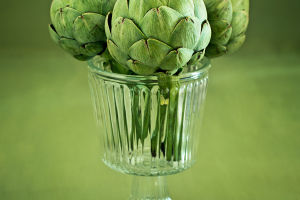Tulips have long been a symbol of beauty and love, and their vibrant colors and elegant shape make them a favorite among gardeners and flower enthusiasts alike.
The story of the tulip dates back centuries, and its journey to becoming one of the world's most beloved flowers is a fascinating one.
Originating in the Ottoman Empire, the tulip quickly gained popularity throughout the Middle East and Europe.
It was the Dutch who truly fell in love with the flower, and by the 17th century, the tulip had become a symbol of wealth and luxury in the Netherlands. At the height of "tulip mania," a single bulb could fetch a price equal to that of a small house.
Today, tulips are grown all over the world, from the Netherlands to Türkiye to the United States. They come in a variety of colors, including red, yellow, pink, and purple, and each shade has its own unique symbolism.
For example, red tulips are often associated with love and passion, while yellow tulips represent sunshine and happiness.
In addition to their beauty, tulips have several unique characteristics that make them interesting flowers. For one, they are one of the few flowers that continue to grow after being cut, often reaching several inches taller than their original height.
They also have a remarkable ability to change color as they mature, with some tulips starting out as one color and gradually transitioning to another.
But perhaps the most interesting aspect of the tulip is its role in history and culture. From the tulip mania of the 17th century to the role it played in modern times, the tulip has been intertwined with human history for centuries.
It has been used in everything from art to literature to fashion, and its presence in our lives is a testament to its enduring appeal.
Whether you are a seasoned gardener or simply someone who appreciates the beauty of nature, the tulip is a flower that is sure to capture your heart.
Its vibrant colors, unique characteristics, and fascinating history make it a true gem among flowers, and a perfect addition to any garden or bouquet. So the next time you see a field of tulips, take a moment to appreciate their beauty and remember the incredible journey that brought them to us.
So how do tulips grow?
1. Choose a sunny location: Tulips need at least 6 hours of sunlight per day. Choose a spot that gets full sun, and avoid planting them in areas that are shaded by trees or other structures.
2. Plant in well-draining soil: Tulips prefer soil that is well-drained and fertile. If your soil is heavy and doesn't drain well, add some organic matter, like compost, to improve its drainage.
3. Plant bulbs in the fall: Tulips should be planted in the fall before the ground freezes. Plant the bulbs about 6 inches deep and 4-6 inches apart, with the pointed end facing up.
4. Water regularly: Water the bulbs after planting, and keep the soil consistently moist until the ground freezes. During the growing season, water once a week if there is no rain.
5. Fertilize: Apply a slow-release fertilizer to the soil in the fall when planting the bulbs, and again in the spring when the leaves start to grow.
6. Remove dead flowers: As soon as the flowers start to fade, pinch them off to prevent the plant from putting energy into producing seeds.
7. Allow the foliage to die back naturally: Once the flowers have faded, allow the foliage to die back naturally. This will allow the plant to store energy for the next growing season.
By following these tips, you can enjoy a beautiful display of tulips in your garden each spring.


